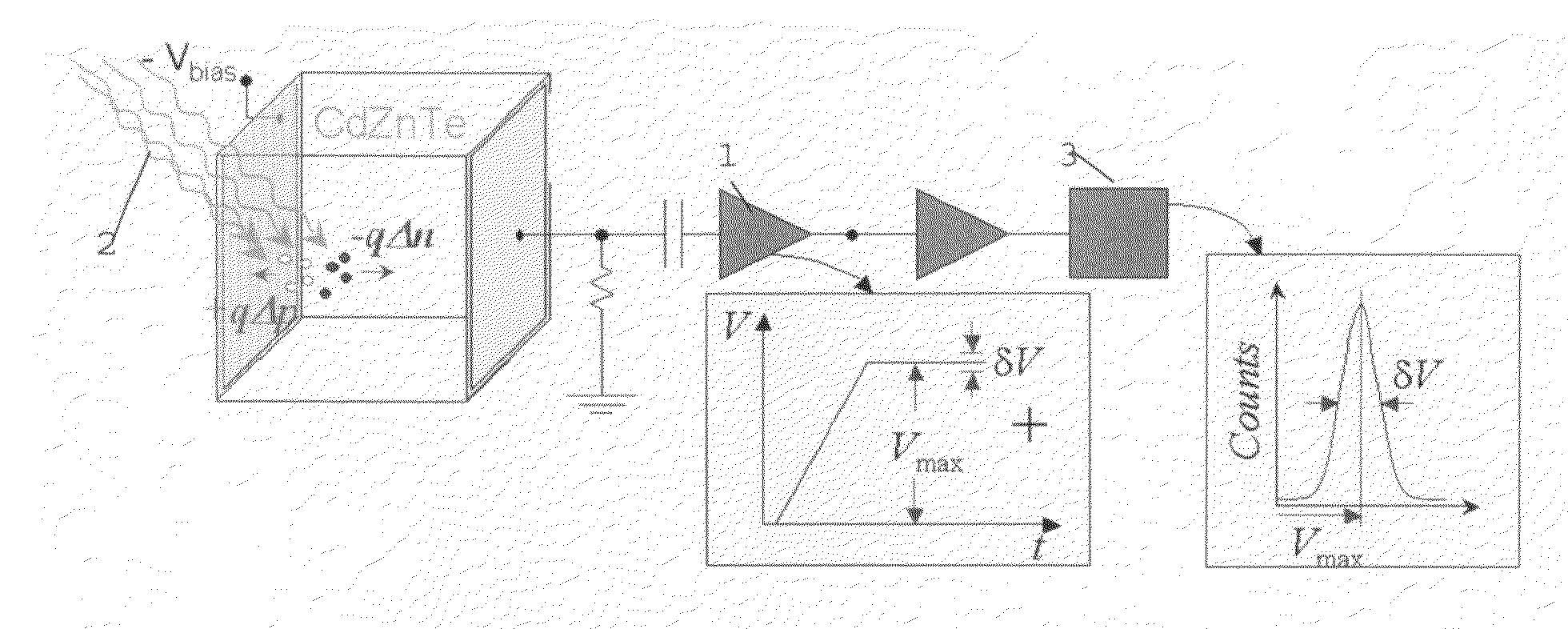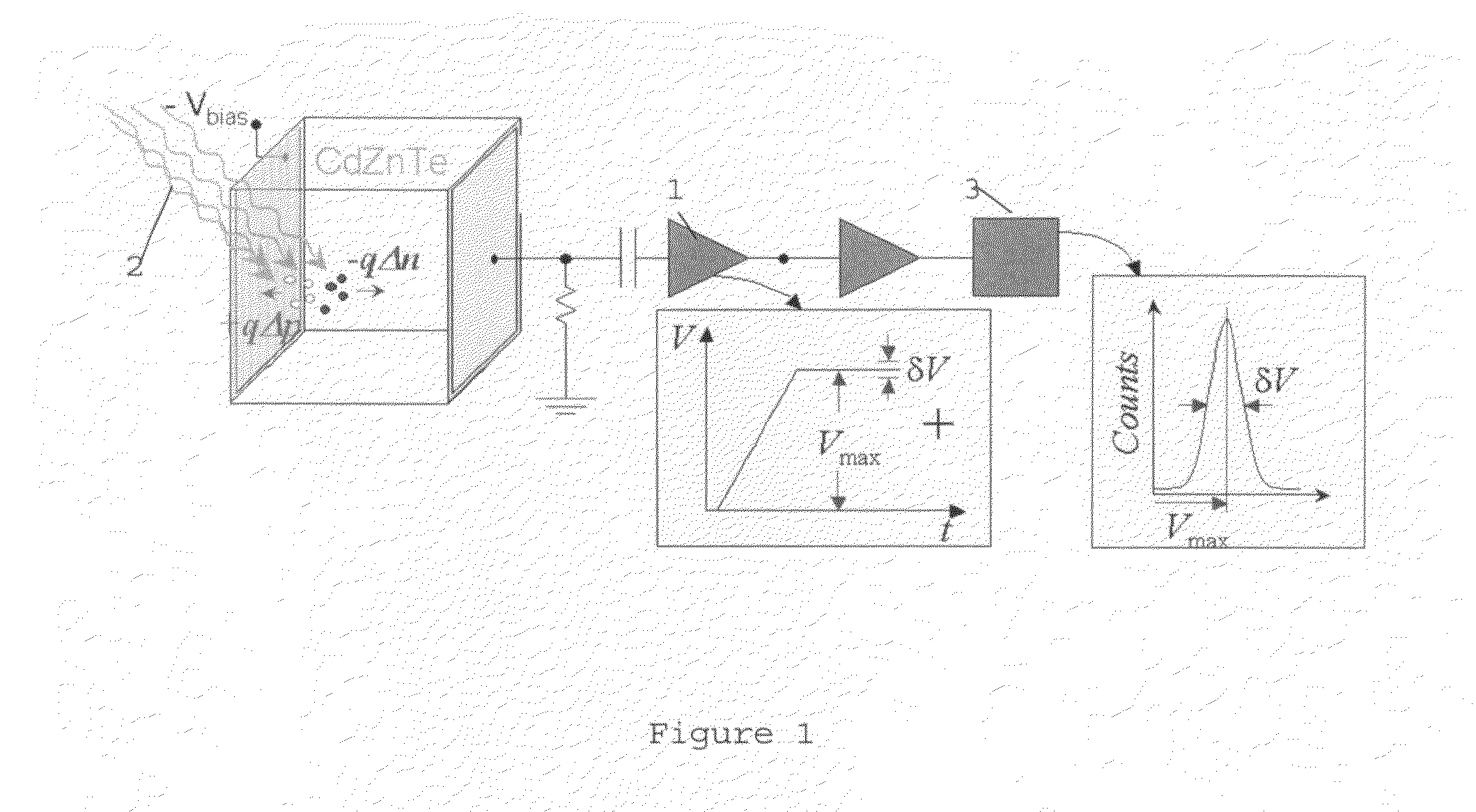Infra-red light stimulated high-flux semiconductor x-ray and gamma-ray radiation detector
a high-flux semiconductor and detector technology, applied in the field of detection radiation, can solve the problems of space-charge formation, space-charge formation and potential temporary paralysis of the device called polarization, and the breakage of the energy peak, so as to achieve the effect of dramatically reducing the residence time of the charge carrier
- Summary
- Abstract
- Description
- Claims
- Application Information
AI Technical Summary
Benefits of technology
Problems solved by technology
Method used
Image
Examples
Embodiment Construction
[0029]The present invention is described with reference to the accompanying figures where like reference numbers correspond to like elements.
[0030]The operation principle of typical pulse-mode semiconductor detectors is shown in FIG. 1. Current is typically integrated by a charge sensitive preamplifier 1 to measure the total charge induced by the outside radiation 3 and produces a voltage pulse (not shown) with amplitude proportional to the total induced charge. Photons with various energies produce voltage pulses in the preamplifier 1 with various amplitude and individual peaks with various peak positions in the multi-channel analyzer 3. Fluctuation in the pulse amplitude due to electronic noise results in a broadening of the energy peak, while charge loss in the detector due to trapping or recombination results in reduced pulse amplitude and a low energy tail in the energy peak.
[0031]FIG. 2 illustrates the situation when high-speed, high-flux x-ray applications, such as diagnostic...
PUM
 Login to View More
Login to View More Abstract
Description
Claims
Application Information
 Login to View More
Login to View More - Generate Ideas
- Intellectual Property
- Life Sciences
- Materials
- Tech Scout
- Unparalleled Data Quality
- Higher Quality Content
- 60% Fewer Hallucinations
Browse by: Latest US Patents, China's latest patents, Technical Efficacy Thesaurus, Application Domain, Technology Topic, Popular Technical Reports.
© 2025 PatSnap. All rights reserved.Legal|Privacy policy|Modern Slavery Act Transparency Statement|Sitemap|About US| Contact US: help@patsnap.com



